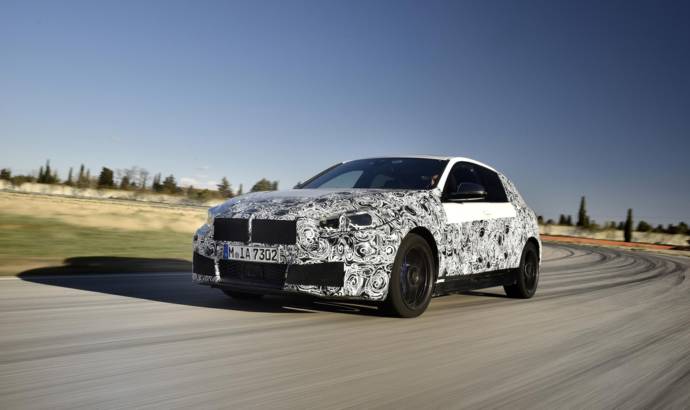BMW is woking hard to finish the final preparations for the unveil of the new generation 1 Series. Camouflaged pre-series vehicles of the third-generation BMW 1 Series are currently still undergoing extensive test drives at the BMW proving ground in Miramas, Southern France. The facility’s diverse handling tracks offer the optimal conditions for refining agility and dynamics of the new BMW 1 Series. This was preceded by five years of intensive development work and the change to the modern BMW front-wheel drive architecture.
The new BMW 1 Series will set new standards in the premium compact class in terms of driving dynamics, whilst also offering significantly more space inside. The BMW 1 Series achieves greater agility both with the new front-wheel drive and BMW xDrive intelligent four-wheel drive.
On the new BMW 1 Series, BMW has utilized all of the experience gained over recent years with BMW Group front-wheel drive models. A crucial element for the car’s exceptionally high agility is ARB technology (actuator contiguous wheel slip limitation) known from the BMW i3s, which is now celebrating its debut in a vehicle with a combustion engine. This transfer of technology from the BMW i brand to the core brand BMW improves traction decisively, while facilitating significantly more sensitive and faster control.
ARB technology, which is standard on the BMW 1 Series, features a slip control system positioned directly in the engine control unit instead of in the control unit for the DSC function (Dynamic Stability Control). Without long signal paths, information is passed on three times faster, with the regulation speed perceived by the driver actually being up to ten times faster. In close coordination with the DSC function, actuator contiguous wheel slip limitation significantly reduces the power understeer usually experienced with front-wheel drive vehicles, but without control intervention to stabilise lateral dynamics. BMW Performance Control (yaw moment distribution) also comes as standard and additionally increases agility of the BMW 1 Series through dynamic brake intervention.
A newly developed 4-cylinder engine stands out prominently within the drive portfolio of the new BMW 1 Series. The BMW M135i xDrive (combined fuel consumption: 7,1-6,8 l/100 km; combined CO2 emissions: 162-155 g/km)* features the most powerful 4-cylinder engine from the BMW Group with a 2-litre capacity and BMW TwinPower Turbo technology. The power unit delivers 225 kW (306 hp), ensuring extremely dynamic handling properties through individual technical solutions such as a reinforced crank drive, new pistons and cod rods, a larger exhaust turbocharger as well as optimised fuel injection valves.
The BMW 1 Series has taken a major leap forward in terms of interior spaciousness. Thanks to the new front-wheel drive architecture with transverse engines and a low centre tunnel, noticeably more space is now available than in the predecessor model, especially on the back seats. For example, legroom for rear-seat passengers has increased by 33 millimetres and headroom at the back by 19 millimetres. Access to the rear compartment is now easier and luggage compartment capacity has increased by 20 litres to 380 litres.



